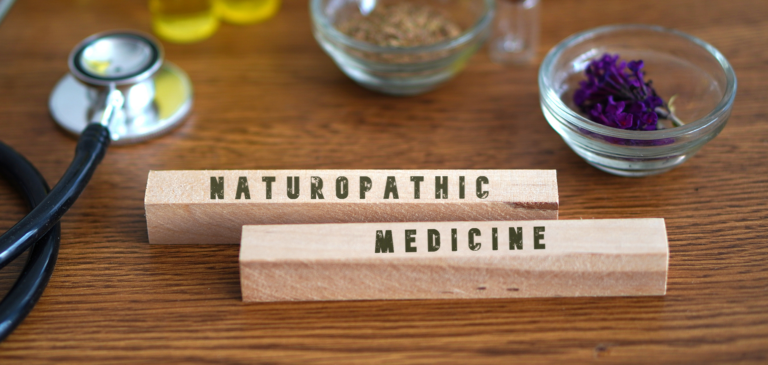The Restorative Powers of Autophagy
Summary
Autophagy, meaning self-eating, is the process in which the body consumes damaged or dead material to redistribute the useful components and eliminate the rest as waste.
Extreme hunger: when calories go down and output goes up, the pounds fly off. Some dieticians celebrate “starvation mode” as a useful way to induce weight loss. In addition, while this can be a helpful practice for dramatically overweight individuals, it applies to healthy weight individuals as well.
The Importance of Autophagy in Healthy Human Beings
The body works hard to maintain homeostasis on a cellular level. Even the healthiest human body contains damaged, dying, or dead cells. In order to deal with these cells, the body employs a process called autophagy. In the simplest terms, autophagy is a form of self-eating in which the body consumes damaged or dead material, redistributes the useful components, and eliminates the rest as waste.
This is not a new discovery; the term “autophagy” was first coined over 40 years ago. However, recent advances in biological science have helped enhance understanding of just how important autophagy is for healthy human bodies. The science of autophagy also reveals practical ways to boost the benefits of this important biological process.
The medical literature has recently revealed that autophagy is critical for the maintenance or rejuvenation of cellular organelles and for energy homeostasis from yeast to human. Thus, many aspects of physiological or pathological phenomena are influenced by autophagy and its dysregulation. Dysregulated autophagy appears to participate in the development of multitudes of diseases such as neurodegeneration, cancer, metabolic diseases, cardiovascular diseases, inflammatory disorders, and aging.
Substantial progress has recently contributed to the understanding of the molecular mechanisms of the autophagy machinery, yet several knowledge gaps remain. Autophagy induction is regulated by the Unc-51-like kinase (ULK) complex, composed of ULK1/2, FIP200, ATG101, and ATG13; this complex is in turn regulated by upstream mTORC1 and AMPK signaling pathways. mTOR and AMPK are energy signaling mechanisms and appear to be the key players in inducing autophagy.1
In addition, the discovery of microRNAs (miRNAs) established a new paradigm of post-transcriptional gene regulation, and during the past decade these small non-coding RNAs have been closely linked to virtually all known fundamental biological pathways.
Even if an individual is at a healthy weight, with a good diet and regular exercise, learning to enhance the body’s autophalogical processes can help take that individual from “not sick” to “truly healthy.”
The Benefits of Autophagy
According to a study published by researchers from Severance Biomedical Science Institute & Department of Internal Medicine:
“Autophagy is a self-degradative process that is important for balancing sources of energy at critical times in development and in response to nutrient stress. Autophagy also plays a housekeeping role in removing misfolded or aggregated proteins, clearing damaged organelles, such as mitochondria, endoplasmic reticulum and peroxisomes, as well as eliminating intracellular pathogens. Thus, autophagy is generally thought of as a survival mechanism, although its deregulation has been linked to non-apoptotic cell death.”2
In simpler terms, when autophagy is running smoothly in the body, it makes cells stronger, cleaner, and more efficient. But when it breaks down or “deregulates,” it can trigger unusual forms of cell destruction. But it is not just individual cells that can benefit from autophagy.
On a more macro-organic level, autophagy reduces inflammation in the body. Inflammation begins when cells break down. Chronic inflammation is to the body what water is to electronic devices; it breaks down important processes, fries essential systems, and can cause severe chronic damage in large quantities. Autophagy does not just keep cells in good shape, it may prevent inflammation from occurring.
Autophagy is about much more than weight loss. Reduced inflammation is consistently linked to longer, healthier human lives. The aforementioned study even claims that strong autophagy is “key in preventing diseases such as cancer, neurodegeneration, cardiomyopathy, diabetes, liver disease, autoimmune diseases and infections.”
And the good news is there are practical techniques, therapies, and habits individuals can start developing to boost the body’s ability to execute autophagy even better.
Inducing and Enhancing Autophagy
Autophagy is one of the most powerful processes in the human body for inducing and sustaining wholistic health and wellness. Research is still developing, but at this stage there are at least three habits that individuals can begin developing in order to induce and enhance this process.
Try Intermittent Fasting
Intermittent fasting (IF) is quickly becoming one of the most popular “fad diets” in the United States and abroad. But despite the current pop culture, IF is actually based in some very real and cutting-edge biological science. The science of nutritional ketosis is growing, and the literature has now established the therapeutic benefit of ketones, specifically beta-hydroxybutyrate. Ketosis is a normal biological state in which metabolism shifts to start primarily consuming fatty acids for energy instead of glucose.
There are many different forms of IF (for example, adhering to a specific “eating window” and fasting from 10:00pm to 2:00pm every day), but they all work on a similar concept. The basic idea is that by withholding nutrients from the body, you force it to completely execute its full metabolic “car wash.”
IF allows the body to completely handle consumed nutrients (inputs) and also enables it to more fully distribute the key building blocks of nutrition (outputs like protein, carbohydrates, and fats) to their proper places. If the body was a car wash, IF allows each car (meal) to be fully cleaned before hurrying another vehicle in to cannibalize the soap, water, brushes, etc.
IF can go beyond a healthy metabolism to also induce and enhance strong autophagy for the body, but doing so requires going further than a traditional IF routine. Studies show that the best autophagy only kicks in after about 24-48 hours of fasting
If an individual reduces eating habits from two standard meals a day with snacks in between to three big meals with no snacking in the interim, then most of the fasting can occur without major discomfort or hunger pains. Of course, sleep time counts as fasting time as well.
Explore High Fat Diets
In order to trigger ketosis, a majority (75 percent) of daily calories need to come from quality fats like ghee, coconut oil, olive oil, avocado, or nuts, and only five to ten percent of daily calories need to come from carbohydrates in forms of colorful vegetables and fruits.
By doing this, the body is signaled to target fat as its primary energy source. This has many health benefits and does help with weight loss, but it also boosts the body’s autophagy processes as well. Studies have shown that shifting into a state of ketosis also kicks the body’s autophagy interactions into higher gear. The research on this is still being expanded upon but animal trials indicate a strong link between these two biological states.
Add Good Stressors to Your Daily Routine
The body needs stress. Modern life has made things so easy on bodies and minds that it is easy to miss out on some fundamental hormone triggers as individuals live relatively leisurely lives. This is an especially serious problem for autophagy, which is primarily meant to help the body handle damaged or dying cells. Stress, by nature, creates the friction that leads to this degradation. In high doses (extreme anxiety, adrenaline overdoses, etc.), stress can lead to illness. But if managed correctly, micro-stressors will rough cells up just enough to usher in the fresh cleansing power of autophagy.
WholisticMatters would like to acknowledge Ryan Lazarus MSc, CNS, DC for his contributions to the content of this article.







